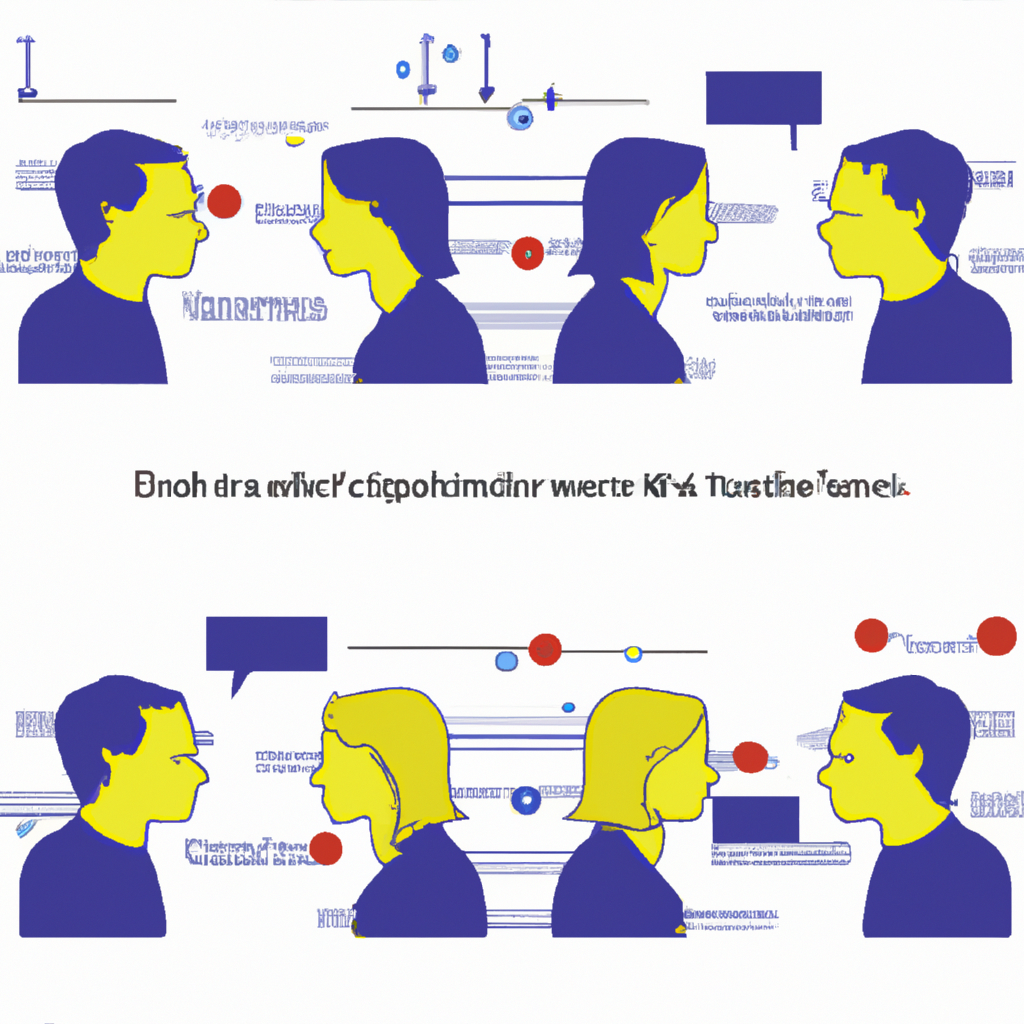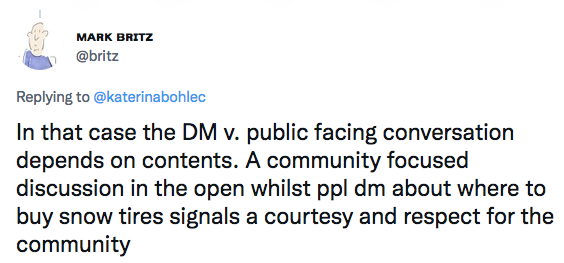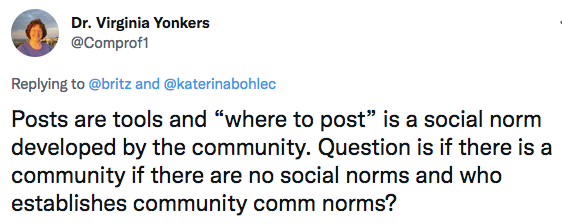Is DMing harming your community?
What form of interaction, private or public, is better at creating a community? Not surprisingly, it's a combination, each having its own purposes and benefits.

In a not-so-distant future, I worked in an office building with only closed doors. Walking through the long, dark corridors, wondering what important conversations are happening behind the closed doors. Before that, I experienced the opposite: Corridors flooded with light coming from the windows through the open office door. An invite to stop and chat.
Nowadays I operate in digital communities: A list of public channels greet me every morning, open to everyone, inviting me to talk and share with others. Next to this, a list of private chats, a series of 1:1 and small group chats, with urgent messages and confidential exchanges. Never physically seeing any members, I’m wondering if defaulting to only public conversations would help us, a group of strangers, become a strong community.
The Pros and Cons of DMs
It's easy to DM someone. Moreover, it often feels like the right thing to do — you don't want to annoy other people by flooding a channel if you believe the topic is only relevant to that person. In addition, you might hesitate to ask what you consider a stupid question in a public space. Not to mention, private conversations are more focused, and less noisy. All these reasons have pushed me to chat with the community and team members privately.
Despite the benefits of DMing, I have also experienced the other side. A person isn't available anymore and information got lost in DMs. Decisions and outcomes are implemented publicly but the process trail is hidden behind digital doors. You get weird questions from people, and you end up wondering how — if you answer in a DM — the information will be shared in public. And of course, the never-ending spam messages in Discord and Twitter asking me to buy some token or apply for another remote job.
But spam and scammers aside, there is a purpose in private communication. People often implicitly assume that private conversations remain private. Thus, the privacy of a DM gives a sense of intimacy, giving rise to the notion that you can speak what is on your heart, as the topic of the DM will remain confidential.
But, wait, the other side of this picture of "closed-door communication" is an office of an investigator: You are alone and without outside help confronted with questions. The spotlight is on you. Your hands begin to sweat. You wonder "is there another room where my team members are being questioned? What are their replies?" In the digital world of Slack and Discord, you open another DM, and reach out, carefully, to your team member. You might do this with one team member, or five. Whatever. You are seeking comfort in the masses.
Based on that observation I turned to Twitter asking:

Answer: It depends on the context

I can see this happening in communities where one person is putting tremendous effort into creating bonds between a loosly connected group of people. In network terms, the community looks like a star, because other members do not know yet about each other, or how to connect with each other.
Answer: It depends on the content

Not every conversation is relevant to the community and needs to happen in the public. Being able to differentiate between the two is a sign of respect.
Answer: It depends on the communication norms

One feature of a community is its communication norm. This refers to what is talked about in public vs in private, should people be @-mentioned, are threads used or not. If in a community, DMs are normal and the accepted way of discussing topics, then, of course, a community exists.
There seems to be a place and time for private conversations in communities. But is one form of interaction better, healthier, for a community?
Are Private or Public Conversations Better?
Wu Li and Meng Chen, from Shanghai Jiao Tong University, looked into how private conversations and public conversations influence community members’ sense of community. Their thinking was this: A sense of community is tying members together, metaphorically binding them to create an invisible being “the community”. The stronger someone’s sense of community, the more they are invested in the community and want to see the community grow. By interacting with the community, members develop this sense of community.
However, not all interaction has the same potential to integrate members into the community. Reading shared content and messages (passive interaction) has little to no impact on developing a sense of community. A bit better, but still subpar is broadcasting of content but without interaction. Most impactful for turning a group of strangers into a community is direct interaction between community members. Now, this direct interaction can happen in public places, visible to all, or behind closed doors in private communication channels such as closed channels or DMs.
The researchers argued that no matter how members interact with each other, the act of exchanging messages helps create a group identity and a higher sense of belonging through this stronger attachment to the community.
But the researchers went one step further. Some interactions are shallow, like the often-seen and heard good morning, how do you do? - fine-and-you chorus. Other interactions have more depth, as when members go into detail about what they are currently doing, or their future plans. The researchers argued that both types of interactions are good for developing a sense of community, but that interactions with depth have a more powerful effect on the sense of community. However, as these deep interactions often take quite some time, or touch upon sensitive topics, they more often happen in private 1:1 communication or small groups and not in public spaces.
The shallow and deep types of interactions are linked to social capital theory. Borrowing terminology from the financial world, social capital is the resources and assets people have thanks to their relationships. In this sense, someone with many influential friends is rich in social capital, whereas other less well-connected people are poor in social capital. But social capital takes on more forms than just rich vs poor. One very common distinction is if a relationship opens new doors and gives someone access to new resources (bridging social capital) or if a relationship helps someone dig deeper into a topic (bonding social capital).
This distinction between bridging and bonding social capital is important in the context of conversations between community members. Going deep into a topic (bonding social capital) normally takes more time than quickly exchanging a couple of articles (bridging social capital).
Shallow interaction is a form of bridging social capital. While it doesn't go much into detail about a member's life or task, it creates a bridge between members to exchange new information. Bridging social capital is important for personal development, creativity, problem-solving and other activities where an individual has to step outside their comfort zone and gain new insights and perspectives. Examples of shallow interactions are:
- sharing links to articles and getting some upvotes, emoji reactions, and replies such as “interesting”
- Posting your intentions or goals for the week a la accountability system
- Asking if someone has heard about tool XYZ
Deep interactions are bonding social capital. That form of interaction demands more from people: More time to read posts and write replies, more understanding, and empathy. Bonding social capital is crucial for learning from another person and developing trust between people. Examples of deep interactions are:
- Providing emotional support to members
- Onboarding a new person to a fast-moving project
- Helping a community member discuss the framing of an article
The researchers argued that these two types of social capital act as mediators between where the interaction is happening (public vs private) and a person’s sense of community. Thus, the researchers tried to answer the following questions:
The study revealed the following:
First, comparing public and private interactions, only public interactions have a direct impact on members' sense of community. Thus, by talking in public channels, members develop a sense of belonging to and ownership of the community. Only communicating using DMs does not directly impact a member’s sense of belonging.
Second, public interactions increase members’ bridging social capital. Thus, by reading posts shared on public channels, members are often confronted with new information, and tools they have never tried. This stimulates them to go beyond their comfort zone and try out new things. In other words, public posts open community members' eyes to a new world.
Summarizing the first two research findings: Talking with other community members in open channels where conversations are visible to all leads to two positive outcomes. First, it increases members' sense of community, and second, it increases members' bridging social capital, which in turn also increases a members' sense of community.
Third, DMs (private conversations) increase members’ bonding social capital. Thus, by chatting with other community members behind closed doors, they develop trust and a deeper relationship. This higher bonding social capital in turn increases their sense of community. Therefore, DMs have an indirect impact on a member’s sense of community. This is what Rosie Sherry meant by building a community can require many 1:1 relationships
What can you do
If you are a community manager, you need to be visible in members’ DMs, but also in the public channels. By posting in public channels and replying to other people’s posts you directly work on increasing the sense of community. Try to integrate other members into conversations. You should reserve DMs for building a deeper bond with community members.
In most communities, introductions happen in a specific channel. While this is certainly helpful for everyone to know who is joining the community, at times it can feel like being on a stage without knowing the audience. Reach out to new members in DMs and take the time to get to know them. This can partially be automated. For example, you can use a form or a bot to collect information about people's skills and expectations. Use this information to help the member (there is nothing worse than filling out a survey just to be asked the same information again during a call or in a private chat)
If you are a community member, share what you read in your community. Preferably don’t just post a link, but go beyond, and add what you find interesting about it. This can just be one sentence. By doing so, you have a positive impact on the sense of community. In addition, you showcase your interests and expertise, helping other community members to get to know you.
Finally, if someone reaches out to you via DM, don't ignore them (assuming it isn't spam or a scam) but take the time to answer. You can refer them to someone else if you are unable to answer the question or take the conversation public if you think the community will benefit from it.